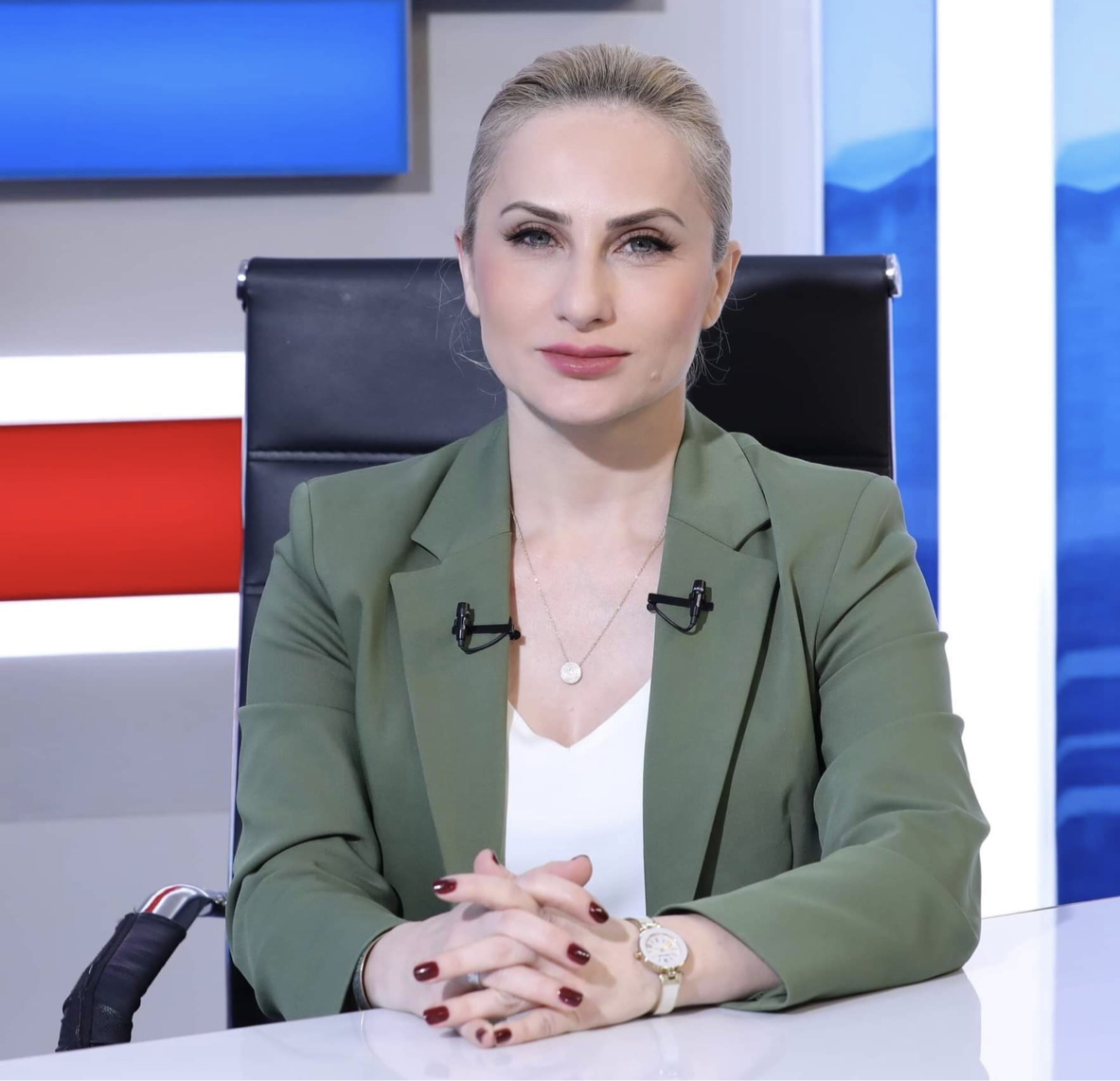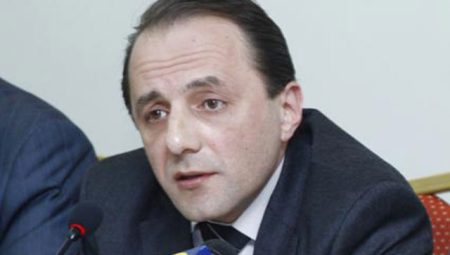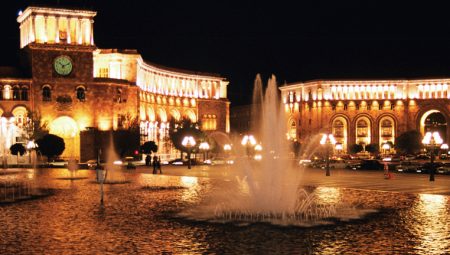After the 2020 Artsakh War, Armenia’s security system –– in place since independence –– has repeatedly demonstrated its inability to react to, confront, and counter external threats to its national security interests. As a result, it is impossible to rely on the existing security system because it is mostly deceptive in nature and at the same time presents significant obstacles to pursuing an independent foreign policy, forming mutually advantageous military-political relations with different centers of power, and establishing a secure foundation for protecting national interests.
Since 1992, Armenia has established and maintained its security system around and within the Collective Security Treaty Organization (CSTO). The Treaty on Collective Security, ratified by Armenia, Belarus, Kazakhstan, Kyrgyzstan, Russia and Tajikistan, was the founding document of the organization. In 1993, Azerbaijan, Georgia, and Belarus joined the Treaty. In 1999, however, Azerbaijan, Georgia, and Uzbekistan refused to sign the protocol for the Treaty’s extension.
In the 1990s the military policy of the participating states of the Treaty was based on the approach that they had been united in terms of their military-political and military-technical bases and infrastructures. Thus they were seeking to conduct a coordinated policy to ensure their collective security. As a result, on October 7, 2002, in Chisinau, the state parties to the Treaty established the Collective Security Treaty Organization (CSTO) as a regional military alliance.
Articles 2 and 4 of the Collective Security Treaty serve as the organization’s cornerstone. Throughout its evolution the CSTO has been developing and adopting documents of strategic importance, and has been establishing cooperation in different areas, as well as mechanisms of practical importance relying on the provisions of these articles on the one hand and having a goal to strengthen their operational application on the other. This statement is of key importance for the analysis and evaluation of the effectiveness of Armenia`s membership in the CSTO in the context of fostering a stable security environment, protecting its territorial integrity and forging systemic military-political relations outside the CSTO.
Article 2 stipulates that if, for example, the security, stability, territorial integrity and sovereignty of the Republic of Armenia is threatened, then the CSTO’s other members are required to convene to coordinate their stances as well as develop and take measures to provide assistance to Armenia to counter the threat. Article 4 outlines a collective defense responsibility. If, for example, Armenia is the target of aggression, then other member signatories to the Treaty will regard this as an aggression against all member signatories and, upon a request, are obliged to immediately offer Armenia assistance –– including military support.
In May and November 2021, when Azerbaijan captured around 45 square kilometers of Armenia’s sovereign territory, Armenia appealed to the CSTO under Article 2, which became a matter of criticism among a wide range of experts and analysts. At the time, the relevant authorities did not provide a clear justification for taking this position. At the same time, it is obvious that the territorial and human loss, moral-psychological, political and military blows suffered as a result of the 2020 Artsakh War had brought Armenia to such a dead end that, just six months after the war’s conclusion, the risk assessment of every audacious political step had to be at least 70/30 in order to be taken into consideration and enforced by the state. It is also possible that through bilateral channels other CSTO members urged or perhaps advised Armenia to refrain from invoking Article 4.
In addition, it is worth mentioning that Russia, as a signatory to the November 9, 2020 tripartite declaration, positioned and presented itself as the primary mediator in the post-2020 war period. Thus, Armenia’s invoking of Article 4 would have been commensurate to declaring Russia’s mediation efforts unsuccessful –– a risky option fraught with unpredictable consequences for both Armenia and Artsakh. Afterall, during Azerbaijan’s May 2021 aggression, the CSTO described the incident as merely a border situation and emphasized that, depending on how the situation develops, appropriate action would be taken in accordance with the provision of the Collective Security Treaty and the CSTO charter.
During Azerbaijan’s September 13-14, 2022 aggression, Armenia invoked Article 4. The CSTO sent a monitoring mission to Armenia to assess the situation immediately, simultaneously declaring that the CSTO favored political-diplomatic measures and that the use of military force with the involvement of the CSTO is out of the question. At the time, the Armenian authorities announced that the CSTO mission had registered the fact that Azerbaijan had attacked and occupied Armenian territory, and that they thus expected the CSTO to adopt a clear political stance and a roadmap to restore Armenia’s territorial integrity. At the Collective Security Council session on October 28, however, Russian President Vladimir Putin only emphasized the importance of border delimitation and unblocking of transport routes in order to settle Armenian-Azerbaijani relations. Moreover, the President of Belarus, Alexander Lukashenko, imbued with an obsession to appear “more Catholic than the Pope,” brought forward formulations contrary to the provisions of the CSTO statutory documents and to the spirit and language of the Organization in general. At the CSTO gathering in Armenia on November 23, 2022, Armenia refused to sign the draft “On the Declaration of the CSTO Collective Security Council and Joint Measures to provide Assistance to the Republic of Armenia,” stating that Armenia’s CSTO membership had not prevented Azerbaijan from attackingArmenia, and that the CSTO, as a military-political structure, had not yet been able to make a decision on its reaction to the aggression against Armenia. In other words, the CSTO refrained from calling military aggression against its member state aggression and, therefore, considering any function stemming from the commitment of collective defense.
Armenian expert and political circles were hardly under the illusion that the CSTO would fulfill its statutory obligations toward Armenia, given strong military-political ties between Azerbaijan and some CSTO members, as well as the fact that in “CSTO plus Azerbaijan” configuration, Armenia is the only member state where the government not only came to power through a democratic revolution, but was also re-elected democratically, even after the country was defeated in the 2020 Artsakh War. This picture crystallizes even more when we also consider Russia’s displeasure with Armenia’s attempts aimed at the normalization of Armenia-Azerbaijan relations through the mediation of the U.S. and the EU.
At the same time a simple but fundamental question arises – does Armenia, a CSTO member state, have the moral and legal right to expect not only a clear political position from her allies regarding Azerbaijan’s military aggression but also practical steps stemming from the principle of collective security to force Azerbaijani forces to retreat from Armenia’s sovereign territory and restore territorial integrity?
Thus, the term “collective security” in the context of the CSTO refers to a condition of protection of the collective interests of the member states that will enable each member state to ensure its independence, territorial integrity, sovereignty, defense capability, and protection from threats based on the coordination and execution of joint activities. The CSTO Collective Security System, in turn, is a collection of forces and resources of the CSTO member states, the Organization’s bodies and national state administration bodies that ensure the protection of the collective interests, sovereignty and territorial integrity of the member states on a collective basis, in accordance with international law and domestic legislation. Thus, for decades, Armenia, as a CTSO member, through coordinating and implementing joint actions in the political, military, military-technical spheres has strengthened the level of protection of the collective security of Russia, Belarus, Kazakhstan, Kyrgyzstan and Tajikistan. This in turn should have afforded Armenia the opportunity to ensure its own independence, territorial integrity, sovereignty, defensibility, and protection from threats.
Being part of the forces and resources of the Collective Security System (CSTO troops), Armenia, for decades, has harmonized the main provisions of legislative acts pertaining to defense and security within the CSTO; developed and implemented common approaches for training troops for operational and combat use in matters of military personnel training; as well as coordinated plans for the development, production, supply and repair of weapons and military equipment with CSTO partners.
Armenia has consistently expanded political cooperation in the field of ensuring global and regional security and coordinated its foreign policy stances within the CSTO to support the process of ensuring the CSTO’s collective security interests. It is worth mentioning that such a position has become more of a liability now, especially given NATO’s current position on Russia as the biggest threat to Euro-Atlantic security, and that the EU has deemed Russia as a state that sponsors terrorism.
Armenia, in support of the forces and resources of the Collective Security System (CSTO troops), along with Russia, joined the Joint Group of Forces in the Caucasus region of the CSTO Collective Security and the Unified Regional Air Defense System. The Collective Security forces and resources, in their turn, are designed to prevent and/or repel an armed attack (aggression) against one or more CSTO member states, to counter challenges and threats to the security of the CSTO member states, to support the defense of the populace against threats brought on by military actions, etc. Therefore, Armenia`s presence in the Joint Group of Forces and the Unified Regional Air Defense System has to be understood as a guarantee that in case of being attacked by Azerbaijan, at least the joint forces and air defense will repel the Azerbaijani aggression against Armenia.
Armenia, in support of practical implementation of the Treaty, has been developing military-technical cooperation in the framework of the CSTO and purchasing military products on preferential terms for those national military units that are allocated as part of CSTO multilateral forces and means for implementation of collective security practical functions. Moreover, the supplying party has the right to monitor the intended use of the supplied goods –– in other words, to inspect their presence in those national military units that are allocated as part of the CSTO troops. This model of military-technical cooperation also aims to ensure the Treaty’s practical execution, more specifically, the functions resulting from implementing Articles 2 and 4. Therefore, the trade of arms within the framework of the CSTO is meant to ensure collective security and was thus considered by Armenia as an opportunity to protect its territorial integrity and sovereignty –– on a collective basis.
Armenia has obliged to coordinate its position with the other member states before deciding to deploy non-member state armed units and military infrastructure facilities on its territory. In other words, as a CSTO member state, Armenia cannot unilaterally decide to establish on its own territory institutional military mechanisms and measures with the support of other actors interested in regional security and stability, thus, ensure its territorial integrity and sovereignty. For instance, if the CSTO continues to neglect the fact of Azerbaijan’s militarized foreign policy toward Armenia and continues to abstain from its statutory obligations, according to CSTO regulations, Armenia cannot even consider any possibility of maneuvering.
Here, a question emerges: Can such a small state as Armenia, with its current external security challenges, completely rely on the political discretion of CSTO allies for the sole reason that it is de jure a member state of the CSTO, but de facto does not receive military support stemming from collective defense? And finally, is it generally effective for a small state like Armenia to be part of a security bloc?
What to Do?
The question of whether the Republic of Armenia should remain a member of the Collective Security Treaty Organization (CSTO) or leave is still being debated in Armenian political and analytical circles. This is largely due to the fact that Armenia is continuously faced with the imperative of building a security system to confront the external threats and challenges it faces following the 2020 Artsakh War. As the pre-war strategies, formulas and tools have proven to be ineffective on the ground, the state is seeking comprehensive solutions to maintain its sovereignty, territorial integrity and independence. However, this task has been made even more difficult by the geopolitical fluctuations brought on by the conflict between Russia and Ukraine, Azerbaijan’s land-grabbing policies towards Armenia, and its ongoing ethnic cleansing policy against Artsakh [Nagorno-Karabakh].
Opponents of Armenia’s withdrawal from the CSTO often present the following arguments:
The CSTO did not provide assistance during Azerbaijan’s occupation of Armenia’s sovereign territory in May 2021 and September 2022, due to the Armenian authorities’ persistent harm to relations with Russia since the 2018 Revolution by pivoting toward the West. In order for Armenia to receive CSTO support based on the principle of collective defense, it must acknowledge its own share of responsibility, stop engaging with the West in a way that is inconsistent with Russia’s strategic interests, and return to the pre-revolution orientation between Armenia and Russia.
The CSTO’s inaction is acceptable, but the current authorities are not responsible for it. Armenia should still not leave the organization, because the risks of doing so have not been assessed and such a departure could potentially escalate Russia’s punitive policy towards Armenia.
The current authorities must be replaced by a political force aligned with official Moscow and capable of repairing Armenia-Russia relations. The key to resolving Armenia’s problems hinges solely on improving its ties with Russia. This entails abandoning or limiting relations with Western powers, addressing Armenia’s problems, devising solutions, and formulating strategic approaches from the perspective of Russia’s national security interests.
Proponents of exiting the CSTO argue the following points:
The organization is not in line with Armenia’s democratic aspirations, due to the dictatorial regimes of its member states. If Armenia wants to integrate into the Western family, Armenia should leave the CSTO and contribute to the decline of Russia’s economic, political, and military influence.
Armenia must minimize relations with Russia and deepen relations with the West instead.
Armenia must leave the organization altogether and join the North Atlantic Treaty Organization (NATO) instead.
Despite their differences in emphasis, both groups are unified by one idea: they rely heavily on the Russian factor, whether in a positive or negative form, while creating provisions and justifications for Armenia’s continued membership in the CSTO or withdrawal from it. This article approaches the subject of remaining in or leaving the CSTO by developing a new national security strategy for post-war Armenia and reviewing Armenia’s positioning in international relations. It acknowledges that Russia, traditionally, has viewed the South Caucasus as its privileged zone of influence.
The Republic of Armenia has adopted two national security strategies. The first strategy, adopted in 2007, was intended to guide the state’s internal and foreign security strategy by identifying its key challenges and priorities. This document emphasized the likelihood of Azerbaijan using force against Armenia and Artsakh as one of the external risks to national security. However, the strategy also recognized numerous factors impeding such developments.
Part one of this article describes how Armenia has built its security system since joining the Russian-led military alliance, which is based on the principle of collective defense and bilateral military-political relations between Armenia and Russia. This principle is also included in the 2007 strategy, which regarded CSTO membership as a component of ensuring Armenia’s security and emphasized the importance of the provision on preferential conditions for military-technical supplies within the framework of the Treaty’s military component.
As a result, the military-political establishment considered the format of the OSCE Minsk Group co-chairmanship and Armenia’s membership in CSTO among the factors deterring Azerbaijan from using offensive action against Armenia and Artsakh.
The second strategy was adopted in 2020, months before the start of the second Artsakh War. The document emphasizes that since the adoption of the 2007 strategy, the international and regional security environment has significantly changed, making Armenia’s challenges more complicated and multidimensional. However despite this, Armenia failed to properly assess the security environment, as evidenced by Azerbaijan’s attack on Artsakh with the support of its strategic ally and NATO member Turkey, and the subsequent borderization and occupation of Armenia’s sovereign territories after the tripartite declaration on the cessation of hostilities on November 9.
During a session of a special parliamentary commission created to investigate the circumstances surrounding the 2020 war, Prime Minister Nikol Pashinyan stated that relevant state bodies assessed the probability of war at only 30% until September 25, 2020 –– two days before the start of the war. Former Defense Minister Davit Tonoyan claimed that the Armenian Ministry of Defense did not predict that Turkish Armed Forces could operate so close to the military operations, using F-16 fighter jets that exposed Armenia’s entire air defense system. He also claimed that Armenia faced serious obstacles importing weapons during the war.
Armenia has never had a clear conceptual foundation for a national security strategy. Political thought has been limited to beliefs such as “Russia will never allow a war in the South Caucasus;” “Russia will support Armenia in the event of a military escalation, because Armenia is Russia’s strategic ally;” “The CSTO is a structure operating on the principle of collective defense, so aggression against Armenia’s sovereign territories will mean aggression against all member states;” “Joining the Eurasian Economic Union rather than the EU Association Agreement was aimed at strengthening our security;” among others. In other words, Armenia has increasingly relied on one strategic ally for its economic, political, and military needs, believing that doing so is its only salvation. If we could turn back the clock, Armenia should have at least refrained from extending its membership in the Collective Security Treaty in 1997, as Azerbaijan did, and instead should have started shaping its distinct place and role in the region.
The Republic of Armenia’s national security strategy can benefit from a variety of concepts working in complementarity. One such concept is Small State Specialization, which implies implementing strategic programs aimed at increasing standards of professionalism and taking on a leading global role in a number of areas in order to boost Armenia’s competitiveness in international affairs and establish its political and geo-economic value. For example, Estonia has been pursuing similar conceptual reforms to enhance its expertise in cybersecurity and robotics and autonomous systems (RAS) for military forces. Singapore has done so in digital control systems, and battlefield management technologies.
However, implementing this concept will be a difficult undertaking for Armenia, as it requires the state to consciously choose to favor strategic planning based not only on Armenia’s geographical location and geopolitical positioning, but also on more efficient use of its material and intellectual resources beyond classical thinking. Small states such as Israel, Estonia, Singapore, UAE, Azerbaijan, and others have succeeded in projecting influence within their political environment by adopting unorthodox solutions. At the same time, Armenia will undoubtedly face domestic opposition, including from a number of public circles and individuals operating in the interests of other states, on the path to developing an “out of the box” solution, as Small State Specialization will advance Armenia’s asymmetric and symmetrical foreign relations capabilities, significantly diminishing Armenia`s overdependence on Russia, leading some supporters of continued CSTO membership to try and “save” Armenia. People who continue to hold comfortable positions within state structures, may also join the circle of “saviors” since Pashinyan’s government’s approach of “laying everything bare” proved ineffective in changing the entrenched unresponsive working style of state institutions. Certain circles in the Diaspora may also exhibit partial resistance, as advancing the agenda of the Republic of Armenia beyond ideas like Armenian Genocide recognition will require accepting and assuming a new role, for which there are no obvious prerequisites following the 2020 Artsakh War.
The next concept is that of a small, non-aligned state. Non-alignment is a state policy of not joining any military alliance. It is important to distinguish it from policies of neutrality and hedging, because neutrality is not a guiding concept of a state’s foreign policy and is only employed in the event of war or conflict. With the hedging policy, the state adopts a non-interference strategy while not ruling out the possibility of joining any future alliance.
When discussing Armenia’s non-alliance status, it is important to remember one fundamental concept: non-alliance cannot be viewed as a goal, as it may lead to the state’s isolation from the outside world. Instead, it should be considered a means to create a mutually beneficial network of strategic partners while bypassing the systemic limitations that arise from being in an alliance. Additionally, non-alliance can be used to project political power and influence in cooperation with small states, serve the state interest of the Republic of Armenia in approaches arising from the characteristics of large and small states, ensure visibility of foreign policy, and become a regional actor.
If non-alignment is perceived as a means, Small State Specialization can become the driving force of foreign policy, because it specifies what Armenia can contribute to potential foreign partners while also formulating its expectations from them.
Adopting a non-aligned political stance and establishing systemic vectors of cooperation with different centers of power in the world can contribute to the effective implementation of a co-alignment strategy in foreign policy. This approach seeks to diversify Armenia’s international political environment by engaging significant partners, while reducing the dominance of one strategic partner and Armenia’s dependence on it. Implementing the co-alignment strategy could result in the formation of bilateral or trilateral strategic partnerships aimed at both regional (e.g. Armenia-Greece-Cyprus) and inter-regional (e.g. Uruguay-Armenia-Singapore) strategic agendas.
Azerbaijan is an excellent example of the benefits of non-aligned status. By considering non-alignment as a means, Azerbaijan has achieved maximum maneuverability in foreign affairs to promote its national security interests and establish strategic partnerships, even with Russia and Turkey, both of which approach their inter-state relations with a conflictual-cooperative logic. Consequently, Azerbaijan increased its political leverage in the exchanges between Russia and Turkey, and can also influence the latter’s policy in the South Caucasus with its own agendas. While Armenia strengthened the collective defense system of CTSO through its membership, Azerbaijan formed mutually beneficial strategic relations with all of Armenia’s CSTO allies.
When developing Armenia’s post-war national security strategies, the Small State Specialization Concept and Small Non-alliance State Concept can be complemented with other effective concepts. However, it is evident that Armenia cannot have a National Security Strategy without a solid conceptual foundation, as it would perpetuate more unsound policy





